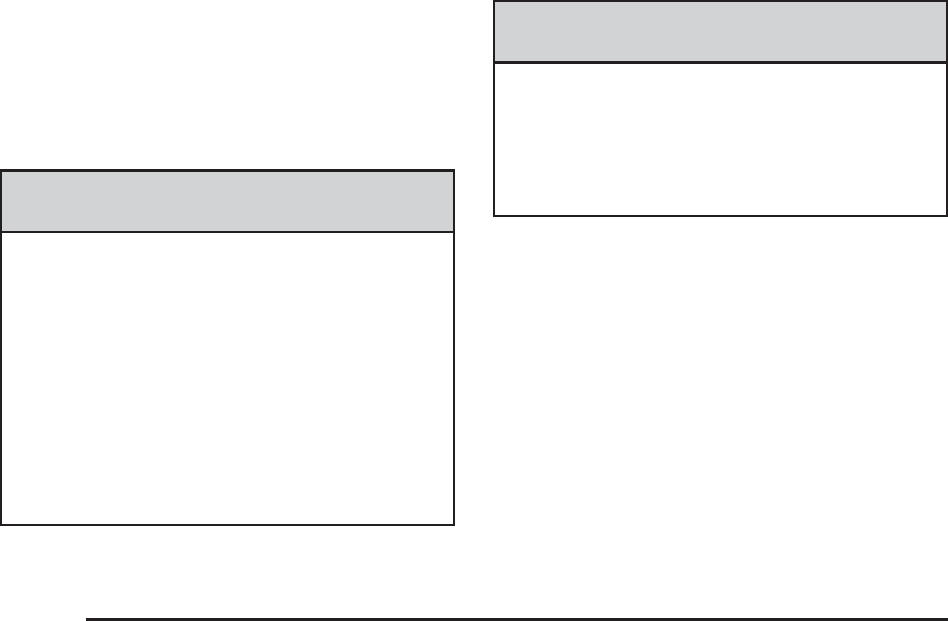
GM recommends replacing tires in sets of four.
This is because uniform tread depth on all tires
will help keep your vehicle performing most like
it did when the tires were new. Replacing less
than a full set of tires can affect the braking
and handling performance of your vehicle.
See Tire Inspection and Rotation on page 5-63
for information on proper tire rotation.
{ CAUTION:
Mixing tires could cause you to lose
control while driving. If you mix tires of
different sizes, brands, or types (radial
and bias-belted tires), the vehicle may
not handle properly, and you could have
a crash. Using tires of different sizes,
brands, or types may also cause damage
to your vehicle. Be sure to use the correct
size, brand, and type of tires on all wheels.
It is all right to drive with your compact
spare temporarily, as it was developed for
use on your vehicle. See Compact Spare
Tire on page 5-100.
{ CAUTION:
If you use bias-ply tires on the vehicle, the
wheel rim flanges could develop cracks
after many miles of driving. A tire and/or
wheel could fail suddenly, causing a
crash. Use only radial-ply tires with the
wheels on the vehicle.
If you must replace your vehicle’s tires with those
that do not have a TPC Spec number, make sure
they are the same size, load range, speed rating,
and construction type (radial and bias-belted tires)
as your vehicle’s original tires.
Vehicles that have a tire pressure monitoring
system could give an inaccurate low-pressure
warning if non-TPC Spec rated tires are installed
on your vehicle. Non-TPC Spec rated tires may
give a low-pressure warning that is higher or lower
than the proper warning level you would get with
TPC Spec rated tires. See Tire Pressure Monitor
System on page 5-58.
5-66


















